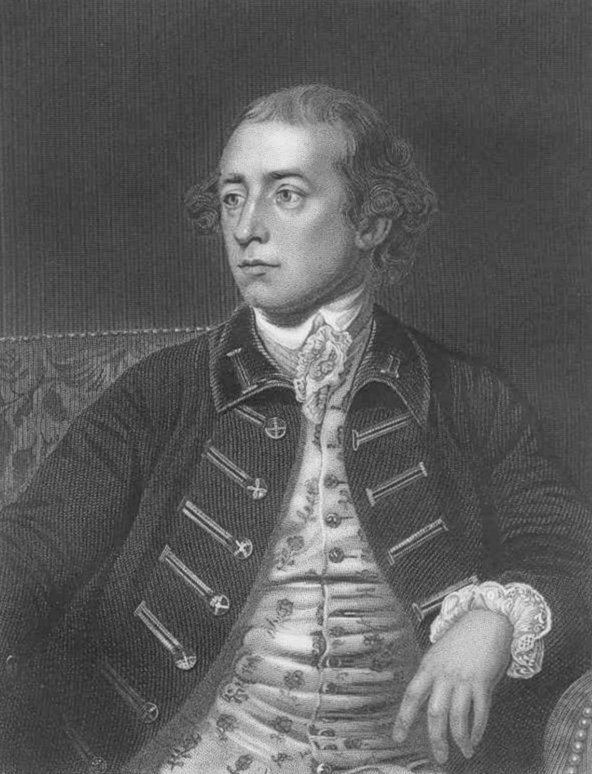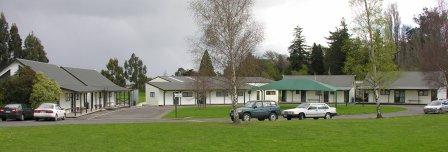|
Mangahao Power Station
Mangahao Power Station is a hydroelectric power station near the town of Shannon, New Zealand. After being delayed by war, access road construction and foundation testing was started by late 1919 and the station opened in November 1924. It makes use of the Mangahao River, through a series of tunnels and pipelines totalling 4.8 kilometers in the Tararua Ranges. It is jointly owned and operated by Todd Energy and King Country Energy. History When commissioned, Mangahao Power Station had cost £1,493,456, caused the deaths of 8 tunnellers from carbon monoxide poisoning, an explosion and crushing, and was the main power station serving the lower North Island, with transmission lines connecting Mangahao with Wellington, Palmerston North, Whanganui, Masterton, Napier and Hastings. The power station was connected through to the Waikaremoana hydro scheme in 1929 and through to Arapuni Dam in 1934, forming the basis of the North Island transmission grid. Mangahao was officia ... [...More Info...] [...Related Items...] OR: [Wikipedia] [Google] [Baidu] |
Hastings, New Zealand
Hastings (; , ) is an inland city of New Zealand and is one of the two major urban areas of New Zealand, urban areas in Hawke's Bay Region, Hawke's Bay, on the east coast of the North Island. The population of Hastings (including Flaxmere) is (as of with a further people in Havelock North and in Clive, New Zealand, Clive. Hastings is about 18 kilometres inland of the coastal city of Napier, New Zealand, Napier. These two neighbouring cities are often called "The Bay Cities" or "The Twin Cities". The city is the administrative centre of the Hastings District, New Zealand, Hastings District. Since the merger of the surrounding and satellite settlements, Hastings has grown to become one of the largest urban areas in Hawke's Bay. Hastings District is a food production region. The fertile Heretaunga Plains surrounding the city produce stone fruits, Pome, pome fruit, kiwifruit and vegetables, and the area is one of New Zealand's major red wine producers. Associated business incl ... [...More Info...] [...Related Items...] OR: [Wikipedia] [Google] [Baidu] |
Peter Seton Hay
Peter Seton Hay (1852–19 March 1907) was a New Zealand civil engineer and public servant. He was born in Glasgow, Lanarkshire, Scotland on 12 July 1852. He was brought to Dunedin in April 1860. In 1875, he joined the Public Works Department, as an engineering cadet, and was awarded a University of Otago BA in 1877 and an MA in 1878. He married Mary Clarke on 22 April 1879 and was survived by her, four sons and a daughter. Peter Seton Hay helped build parts of the Main South Line, Central Otago, Midland and Catlins River railways, before moving to the Wellington head office in 1884. His works then included Timaru Harbour, the NIMT (with the Makōhine, Mangaweka, Hapuawhenua, Taonui, Manganui-a-te-ao and Makatote viaducts), Awatere bridge; Farewell Spit Lighthouse, Rakaia Gorge Bridge, Christchurch Exhibition towers, Motueka Harbour and reports on the hydroelectric potential of the Waikato, Waikaremoana, Mangawhero–Wanganui and Lakes Coleridge, Hāwea, ... [...More Info...] [...Related Items...] OR: [Wikipedia] [Google] [Baidu] |
Waipukurau
Waipukurau is the largest town in the Central Hawke's Bay District on the east coast of the North Island of New Zealand. It is located on the banks of the Tukituki River, 7 kilometres south of Waipawa and 50 kilometres southwest of Hastings, New Zealand, Hastings. History and culture Māori Central Hawkes Bay, where the town is located was settled by Te Aitanga a Whatonga, the descendants of Whatonga, grandson of Toi Kairakau. These were the Ngati Tara and Rangitāne peoples. In the mid 1500s the Ngāti Kahungunu invaded the area from the north and in the subsequent fighting drove the Rangitāne south into the Tahoraiti area (Dannevirke). Warfare continued through the 1600s until the time of Te Rangikoianake. His first child Te Kikiri was adopted by the Ngai Toroiwaho to be their chief - he had mana over the Waipukurau district.Aramoana Beach, Historical and Archaeological Report, Patrick Parsons, Central Hawkes Bay District Council, January 2001 - Waipukurau Library copy Fight ... [...More Info...] [...Related Items...] OR: [Wikipedia] [Google] [Baidu] |
Ngauranga
Ngauranga is a suburb of New Zealand's capital city, Wellington, in the lower North Island. Situated on the western bank of Wellington Harbour, it lies to the north of the centre of the city. Ngauranga is lightly populated due to the rugged terrain and the area's focus on industry. The 2023 New Zealand census stated that the population of Ngauranga was 51. It includes the Ngauranga Gorge, through which New Zealand State Highway 1, State Highway 1 passes on its route out of Wellington to Porirua and the west coast. To the east, New Zealand State Highway 2, State Highway 2 runs wedged between hills and Wellington Harbour on its route from Wellington to the Hutt Valley, Wairarapa, and beyond. Alongside State Highway 2 is the Hutt Valley Line portion of the Wairarapa Line railway, which includes a Ngauranga Railway Station, station in Ngauranga served by frequent commuter trains. The North Island Main Trunk railway also passes through Ngauranga, via two tunnels of the Tawa Fla ... [...More Info...] [...Related Items...] OR: [Wikipedia] [Google] [Baidu] |
Dannevirke
Dannevirke ( "Earthworks (archaeology), work of the Danes", a reference to Danevirke; or ''Tāmaki-nui-a-Rua'', the area where the town is) is a rural service town in the Manawatū-Whanganui region of the North Island, New Zealand. It is the main centre of the Tararua District. The surrounding area, a catchment and source of the Manawatū River (approximately 20 Min drive north of town) has developed into dairy, beef cattle and sheep farming, which now provides the major income for the town's population of . History Before European settlers arrived in the 1870s, the line of descent for Māori in the area was from the Kurahaupō waka. The tribe of the area is Rangitāne, with geographic distinction to Te Rangiwhakaewa in the immediate Dannevirke region. The first known 'Aotea' meeting house was established approximately 15 generations ago (from 2010) followed by the building of a marae at Makirikiri near Dannevirke at about the same time as the first Nordic settlers arrived ... [...More Info...] [...Related Items...] OR: [Wikipedia] [Google] [Baidu] |
Mangamaire Railway Station
The Mangamaire railway station on the Wairarapa Line was located in the Tararua District of the Manawatū-Whanganui region in New Zealand’s North Island. The station opened on 5 January 1897 and closed on 1 August 1988. References Buildings and structures in Manawatū-Whanganui Rail transport in Manawatū-Whanganui Tararua District Defunct railway stations in New Zealand Railway stations in New Zealand opened in 1897 Railway stations in New Zealand closed in 1988 {{NewZealand-railstation-stub ... [...More Info...] [...Related Items...] OR: [Wikipedia] [Google] [Baidu] |
Woodville, New Zealand
Woodville, previously known as The Junction, is a small town in the southern North Island of New Zealand, 75 km north of Masterton and 25 km east of Palmerston North. The 2013 census showed that 1401 people reside in Woodville. The town is in the Tararua District and the Manawatū-Whanganui region, although it has strong ties with the Hawke's Bay region, of which it was once a part, but is often considered to be the northern boundary of Wairarapa. It is within the catchment area of the Manawatū River. Geography Woodville covers a land area of 4.04 km2. Only a few kilometres west of Woodville, the Manawatu River runs from east to west and cuts a deep gorge through the mountains, effectively slicing a mountain range in two. It is unusual geology as the river flows east towards the Pacific coast of the lower North Island, then cuts back west through the gorge and flows out into the Tasman Sea near Foxton. Known by Māori as Te Āpiti, the gorge itself features ... [...More Info...] [...Related Items...] OR: [Wikipedia] [Google] [Baidu] |
Evans Bay, New Zealand
Evans Bay () is a large bay at the southern end of Wellington Harbour, New Zealand. Located between the Miramar Peninsula and Hataitai, it was the site of New Zealand's first patent slip and served as Wellington's international flying boat, flying-boat terminal from 1938 until 1956. It is named after George Evans (Australian politician), George Samuel Evans, an early Wellington settler. Geography Evans Bay is a large U-shaped bay within Wellington Harbour. Within the bay are smaller features such as Balaena Bay, Hataitai Beach and Shelly Bay. Prior to the Haowhenua earthquake in about 1460 AD, Miramar was an island and Evans Bay would have been open to Lyall Bay. Today it is bounded by the Miramar peninsula to the east, the Rongotai isthmus to the south, and a hilly ridge forming part of Hataitai to the west. Formerly the Waipapa Stream flowed from the valley in Hataitai into the head of Evans Bay near the bluff at Wellington Road, creating a large swampy delta. The shorelin ... [...More Info...] [...Related Items...] OR: [Wikipedia] [Google] [Baidu] |
Petone
Petone (Māori language, Māori: ''Pito-one'') is a large suburb of Lower Hutt, Wellington, New Zealand. It stands at the southern end of the Hutt Valley, on the northern shore of Wellington Harbour. Europeans first settled in Petone in January 1840, making it the oldest European settlement in the Wellington Region. It became a borough in 1888, and merged with Lower Hutt (branded as "Hutt City") in 1989. Etymology The Māori language , Māori name means "an umbilical chord (''pito'') buried in the sand (''one'')", as a symbolic tethering of a newborn to the Tangata whenua, whenua (land) in Māori culture. On 6 September 2024, the Hutt City Council voted to officially rename "Pito One." This proposed name change was supported by the New Zealand Geographic Board, The Wellington Tenths Trust and the Palmerston North Māori Reserve Trust. On 19 December 2024, Minister for Land Information Chris Penk used his statutory ministerial powers to set aside the Hutt Council's decision to ... [...More Info...] [...Related Items...] OR: [Wikipedia] [Google] [Baidu] |
Khandallah
Khandallah is a suburb of Wellington, the capital city of New Zealand. It is located northeast of the city centre, on hills overlooking Wellington Harbour. Description The northeastern part of the suburb is dominated by a large area of parkland, which stretches north towards Johnsonville. Three parks that make up this reserve land total almost of the slopes of Mount Kaukau. The summit of this peak, which is topped by Wellington's main terrestrial television transmitter tower, provides impressive views of the harbour. Khandallah has a reputation for being one of the most affluent of Wellington's suburbs. The Khandallah village shopping centre in Ganges Road has a New World supermarket, restaurants, dairy and a pub as well as the Library and Town Hall. Here nineteen new shops opened in the 1920s, overtaking the original shops around the railway station. Box Hill was named after a sentry post that was established during the "Māori Scare" of 1846, near the present Angli ... [...More Info...] [...Related Items...] OR: [Wikipedia] [Google] [Baidu] |
Oroua County
Oroua County was one of the counties of New Zealand in the North Island. Centred on the town of Feilding, it had an extent of just under 500 square kilometres. The county was first established in 1883, unilaterally declared as a protest against the local Manawatu County Council. It covered much of what is now Manawatū District as well as part of Palmerston North city, and the initially elected councillors stood on the platform of abolishing county administrative activities within the area. Activities were devolved to local town and road boards, and the county as an administrative entity became essentially non-existent. Over the following twenty years, several parts of Oroua had been reorganised into new counties (Kiwitea, Kairanga, and Pohangina). The rump of Oroua County (except for Ashhurst, which was transferred to Palmerston North City Council) was reestablished officially in 1903. [...More Info...] [...Related Items...] OR: [Wikipedia] [Google] [Baidu] |




